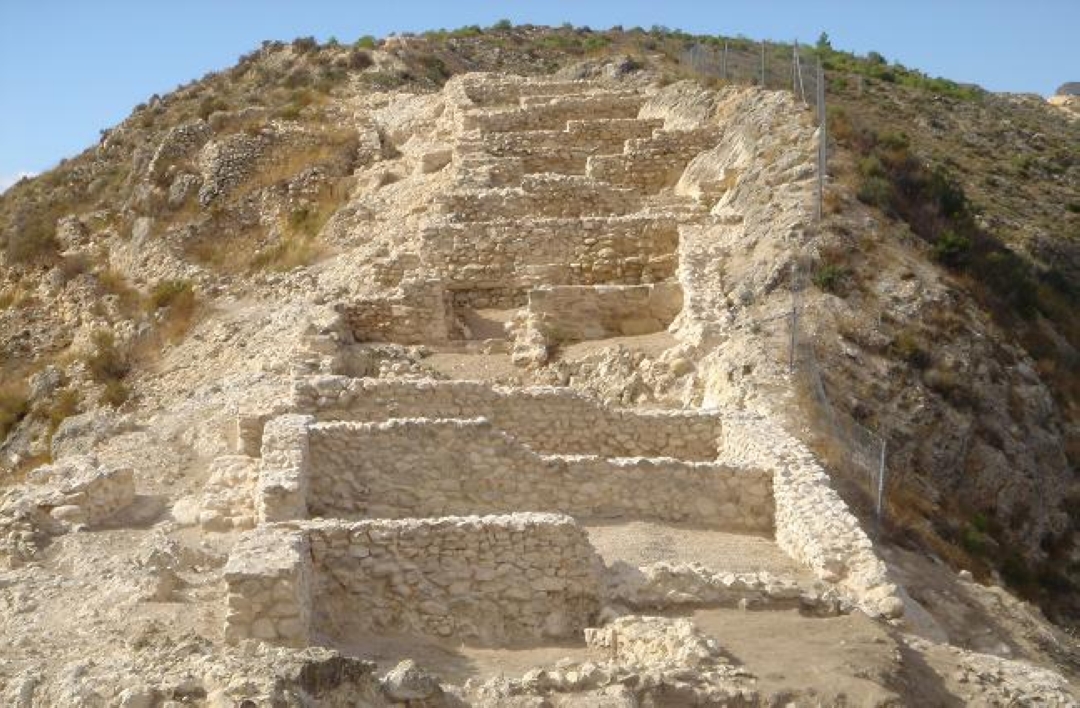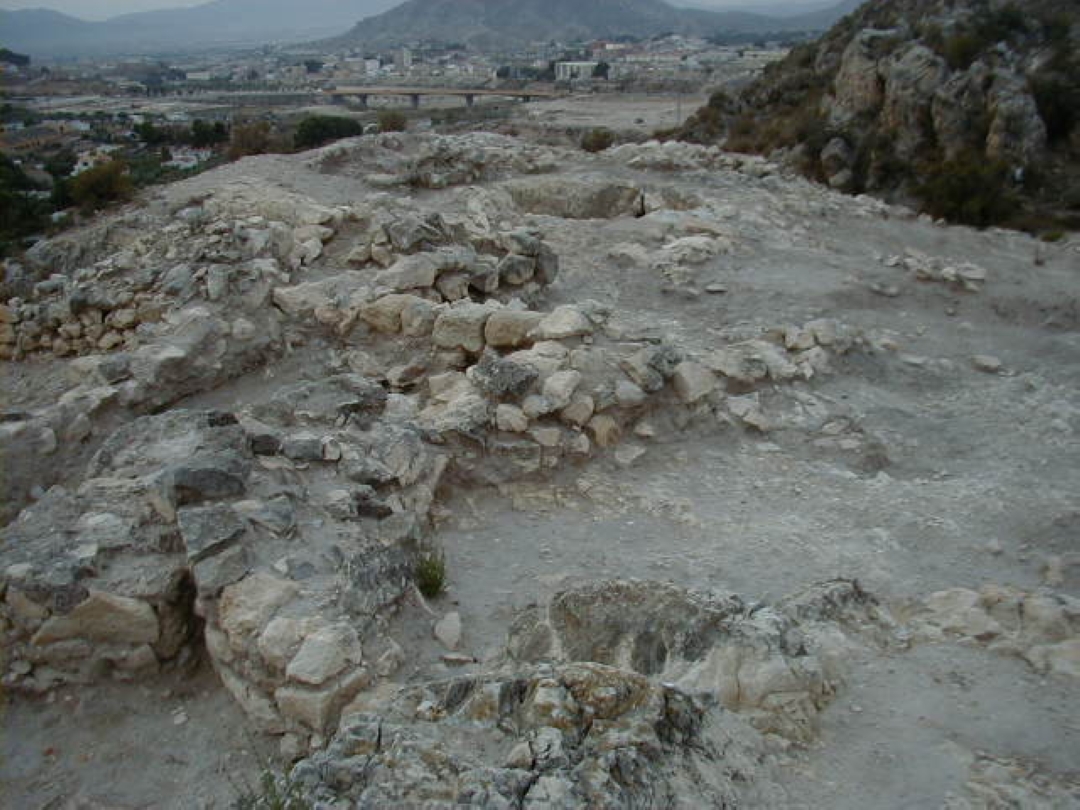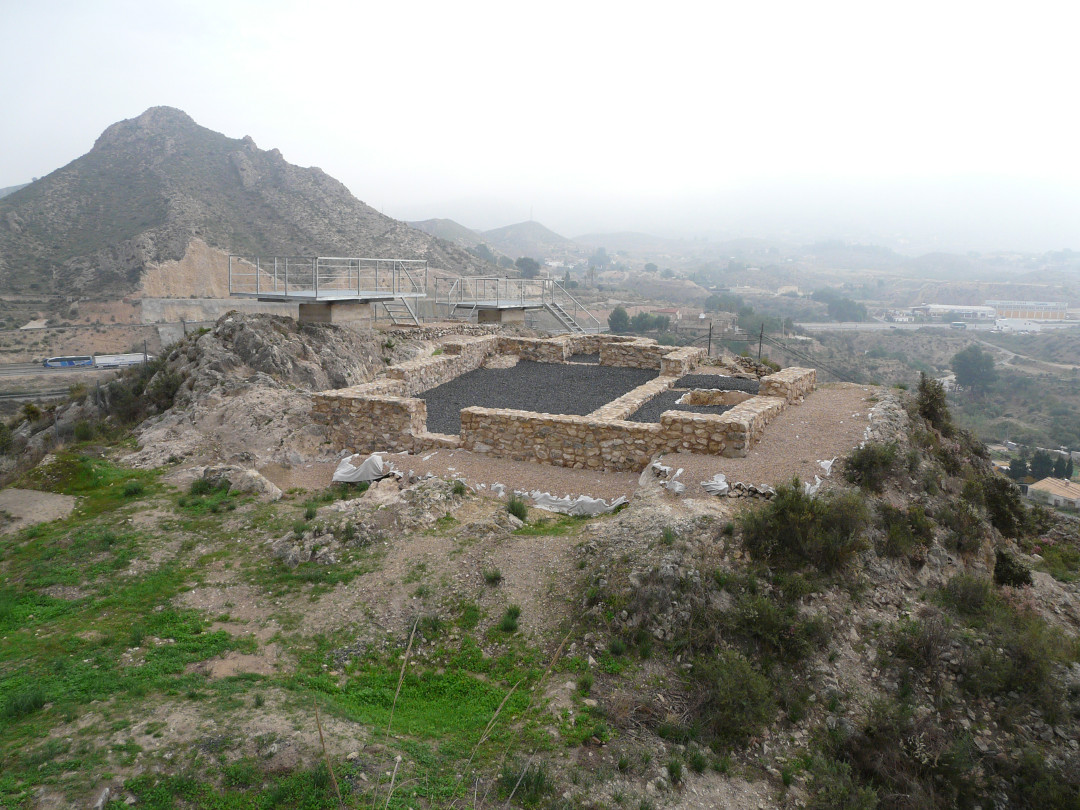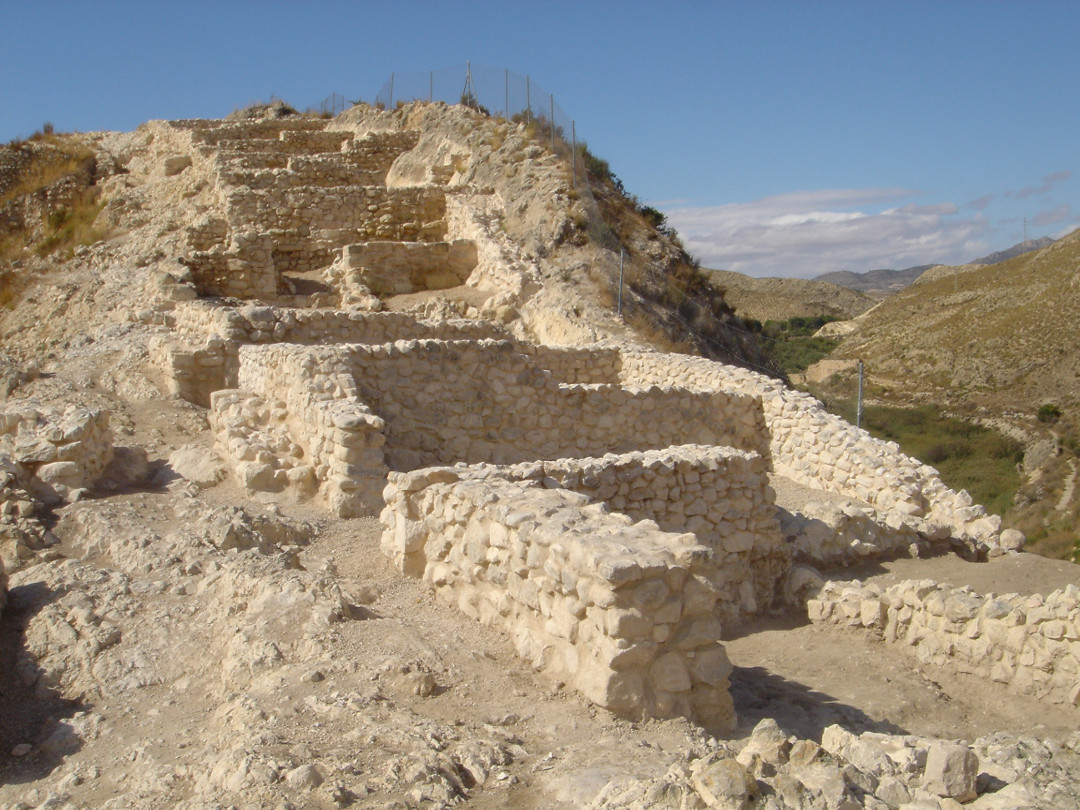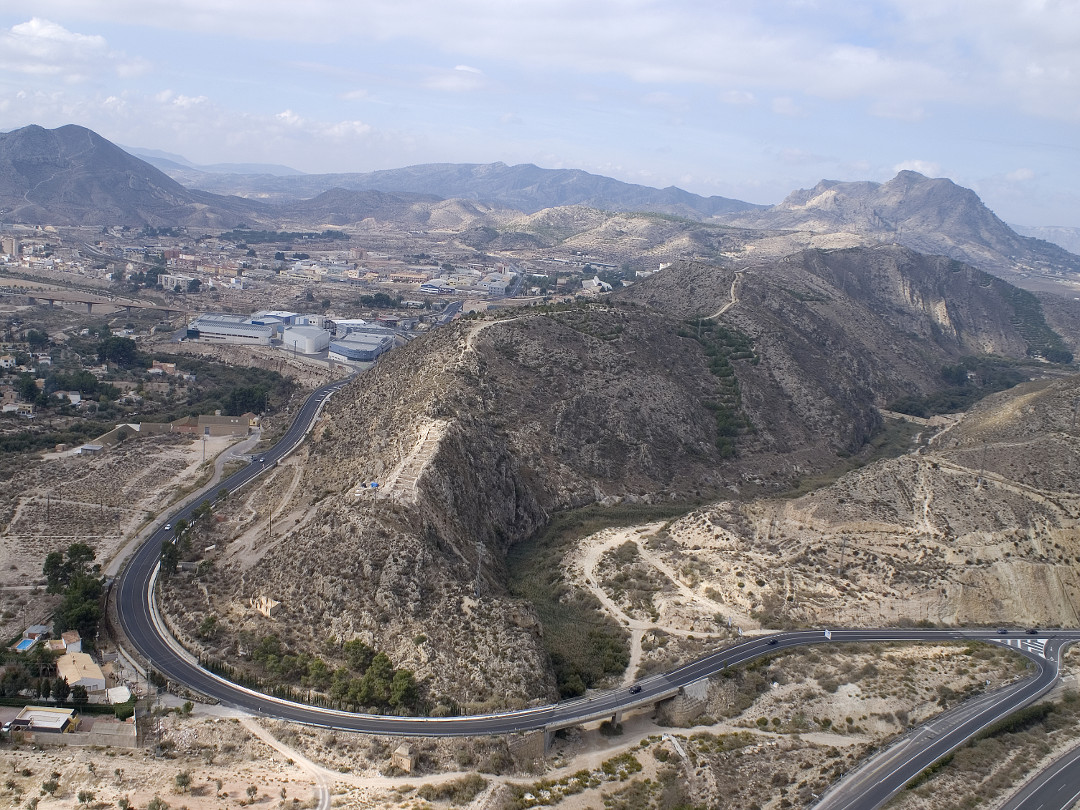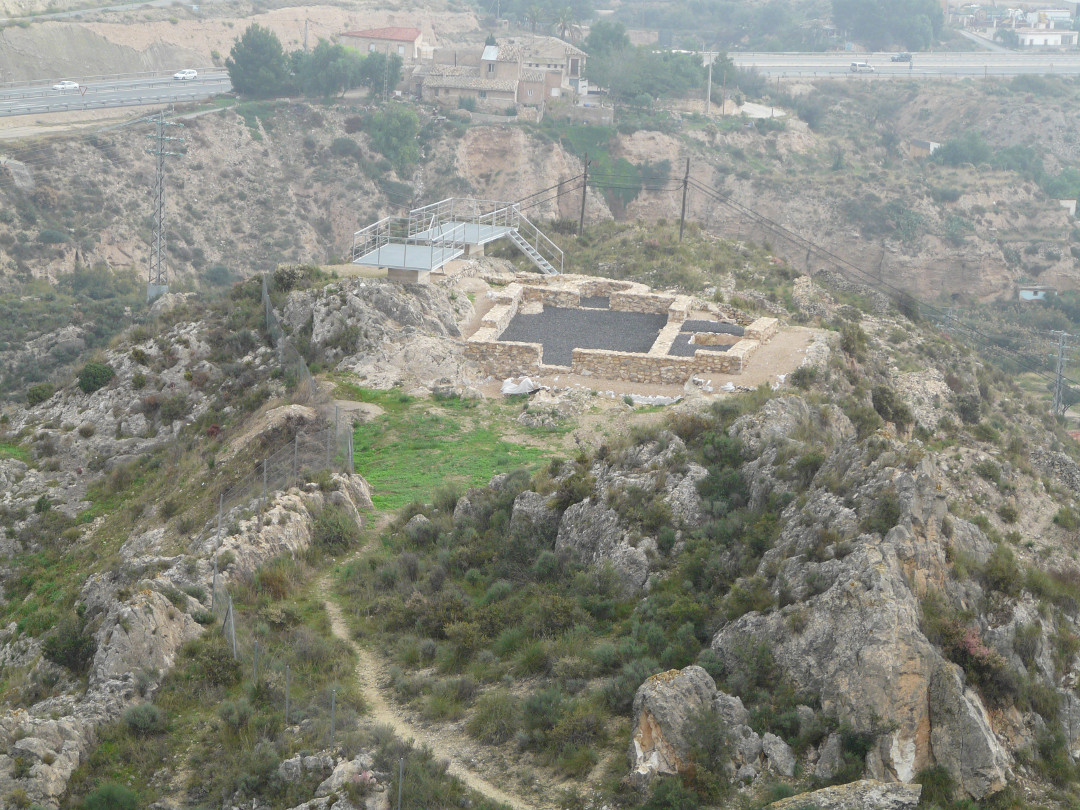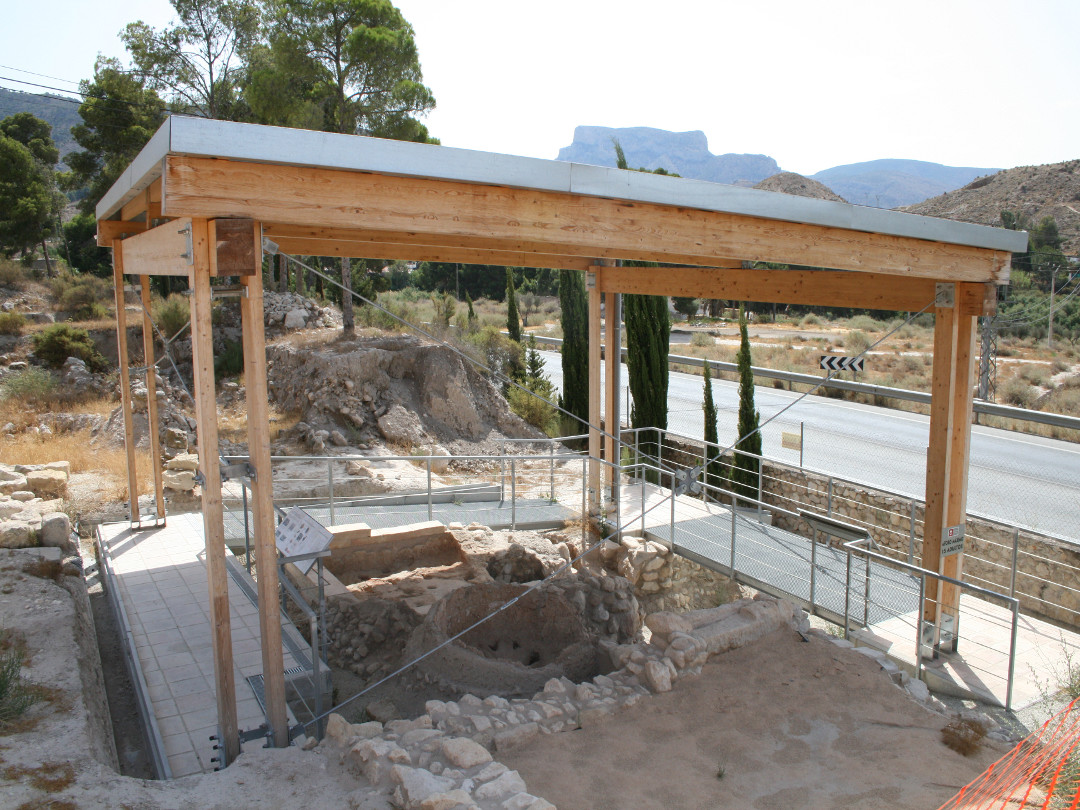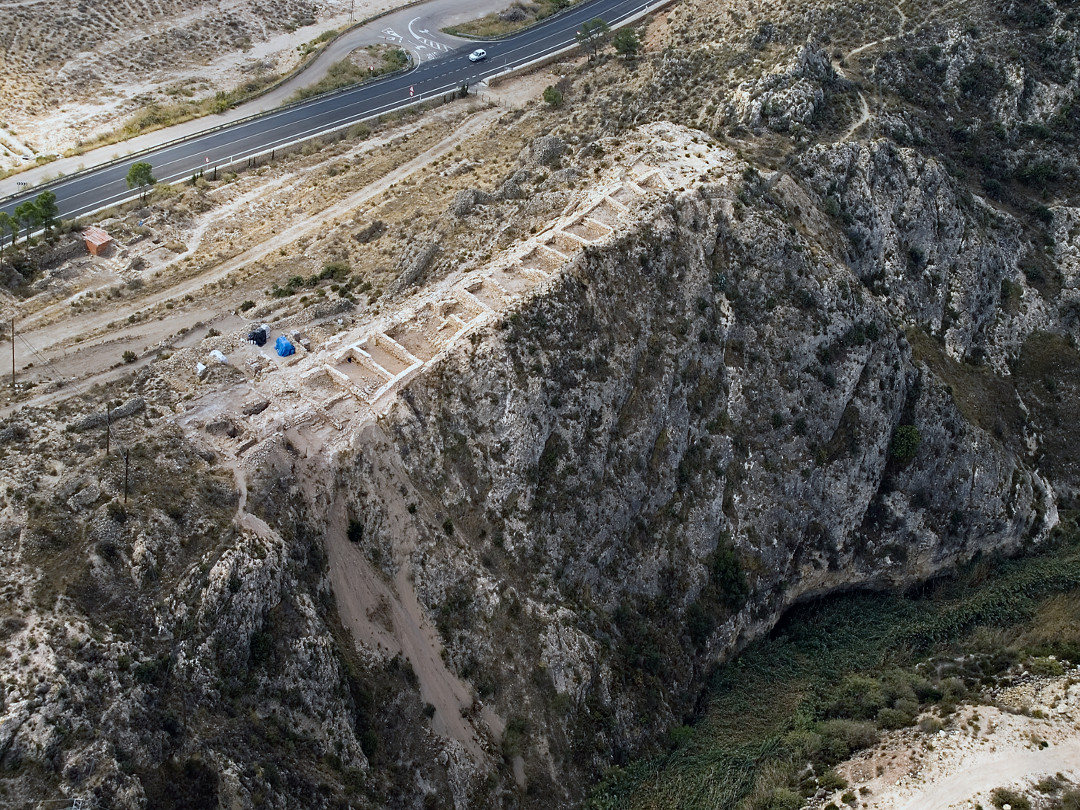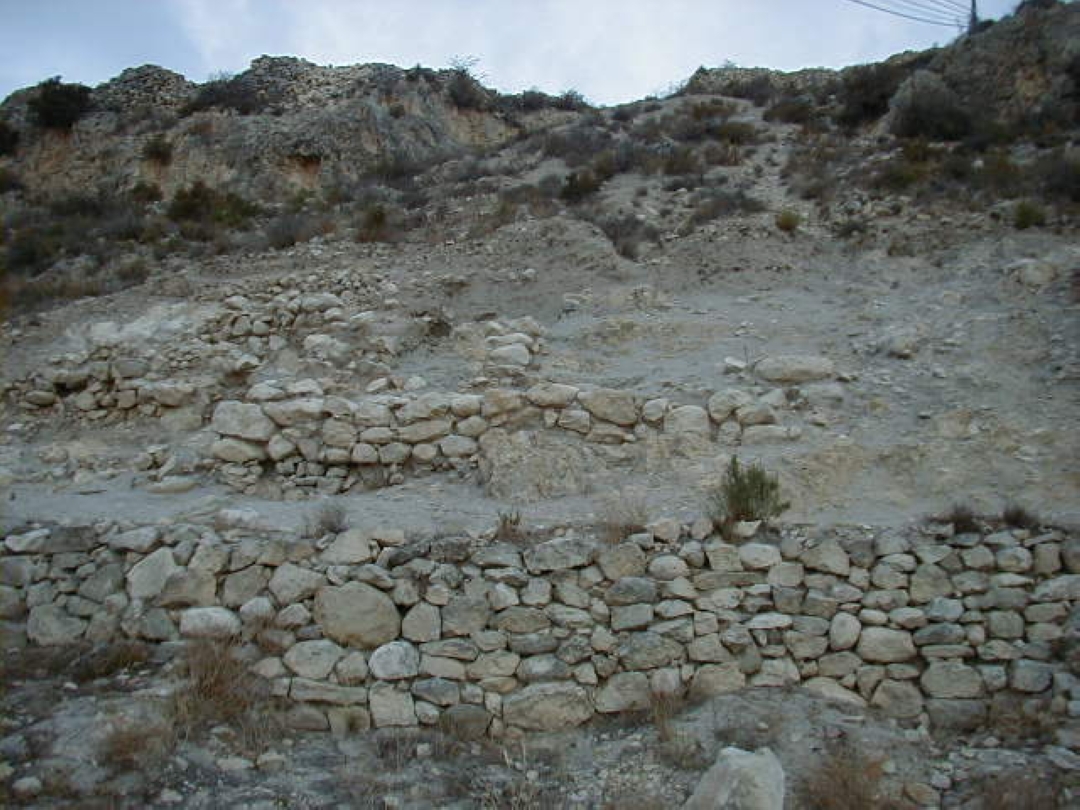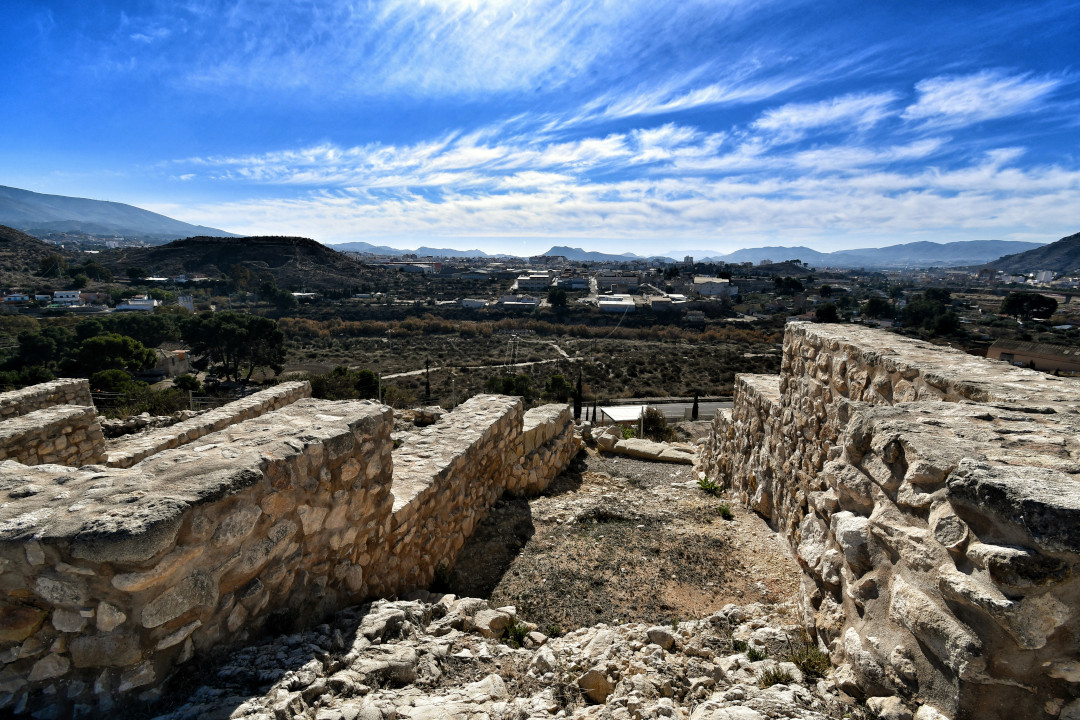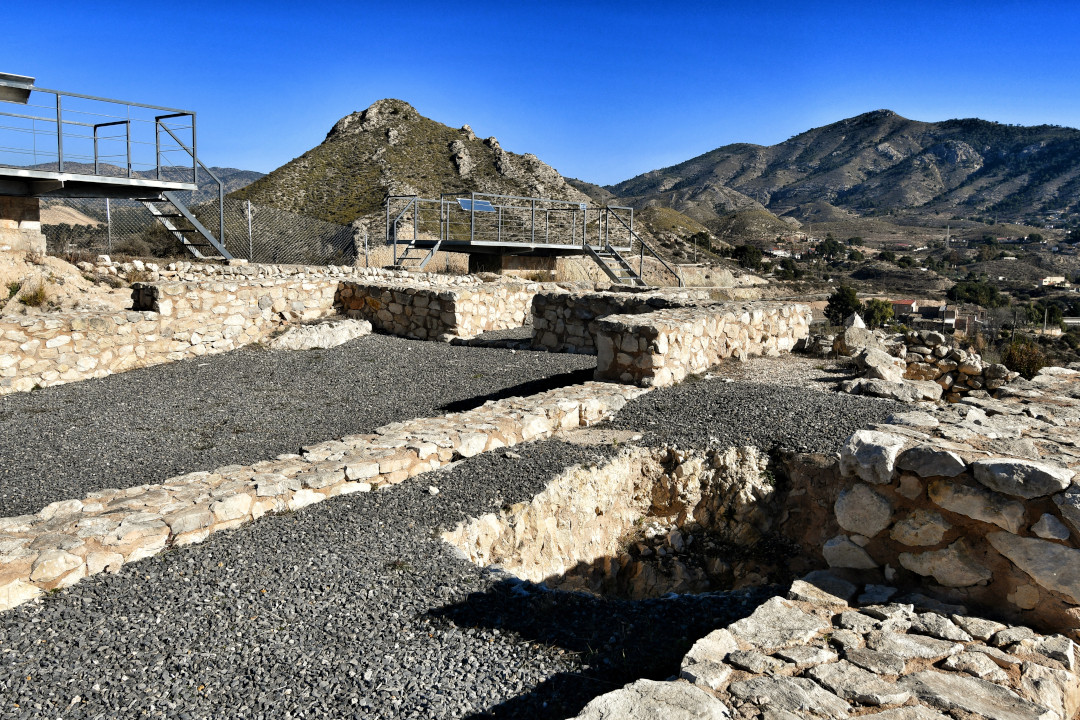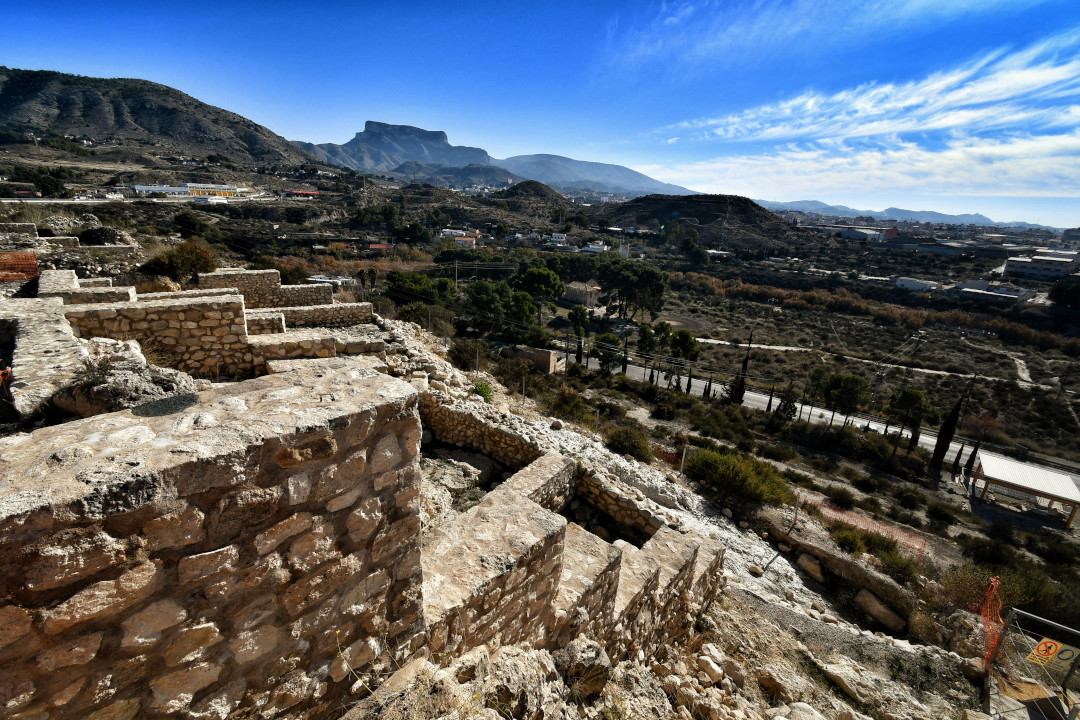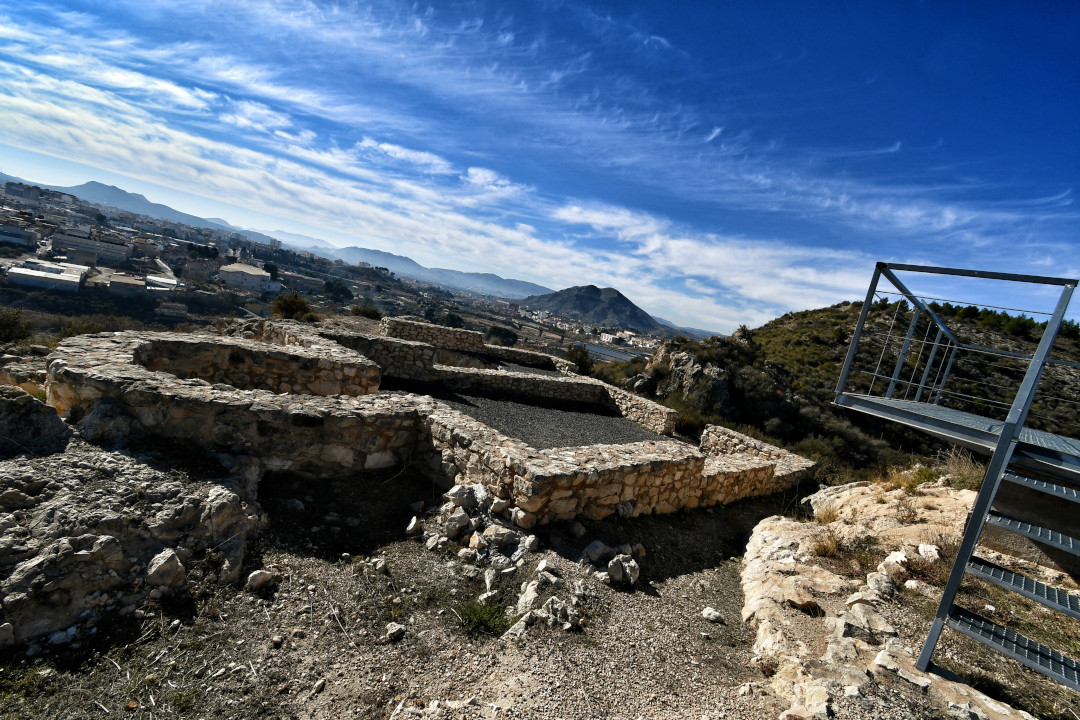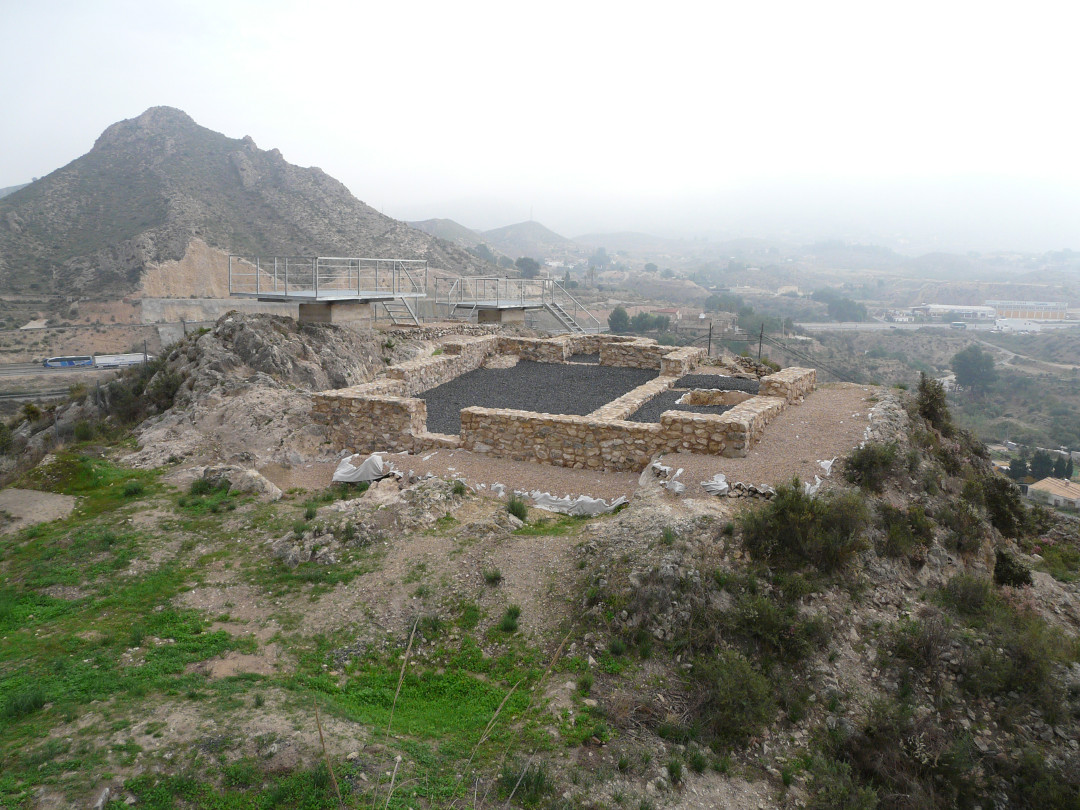EL MONASTIL ARCHAEOLOGICAL SITE
El Monastil is one of the most important and representative archaeological sites of the Elda’s historic heritage and the province of Alicante. Officially declared an Asset of Cultural Interest, it is located on the mountain of La Torreta, on the outskirts of the town, surrounded by the Vinalopó river.
El Monastil had an advantageous strategic territorial position, key to controlling one of the main natural routes between the Mediterranean coast and the central plateau. It was, successively, a Bell Beaker, Bronze Age and Orientalizing settlement, as well as an Iberian oppidum and a fortified enclave in the Ibero-Roman period. It was also very probably the site of the “mansio” Ad Ello of the Antonine Itinerary, located on a branch of the Via Augusta. This name gave rise to the current name of the town, Elda. It was later an important late Roman settlement, with important military and religious functions under Byzantine and Visigothic rule. In this final stage it may have housed a monastery, as well as the enigmatic and debated Episcopal see of Elda, which appears in the Councils of Toledo (7th century). The site was abandoned during the Emirate Islamic period.
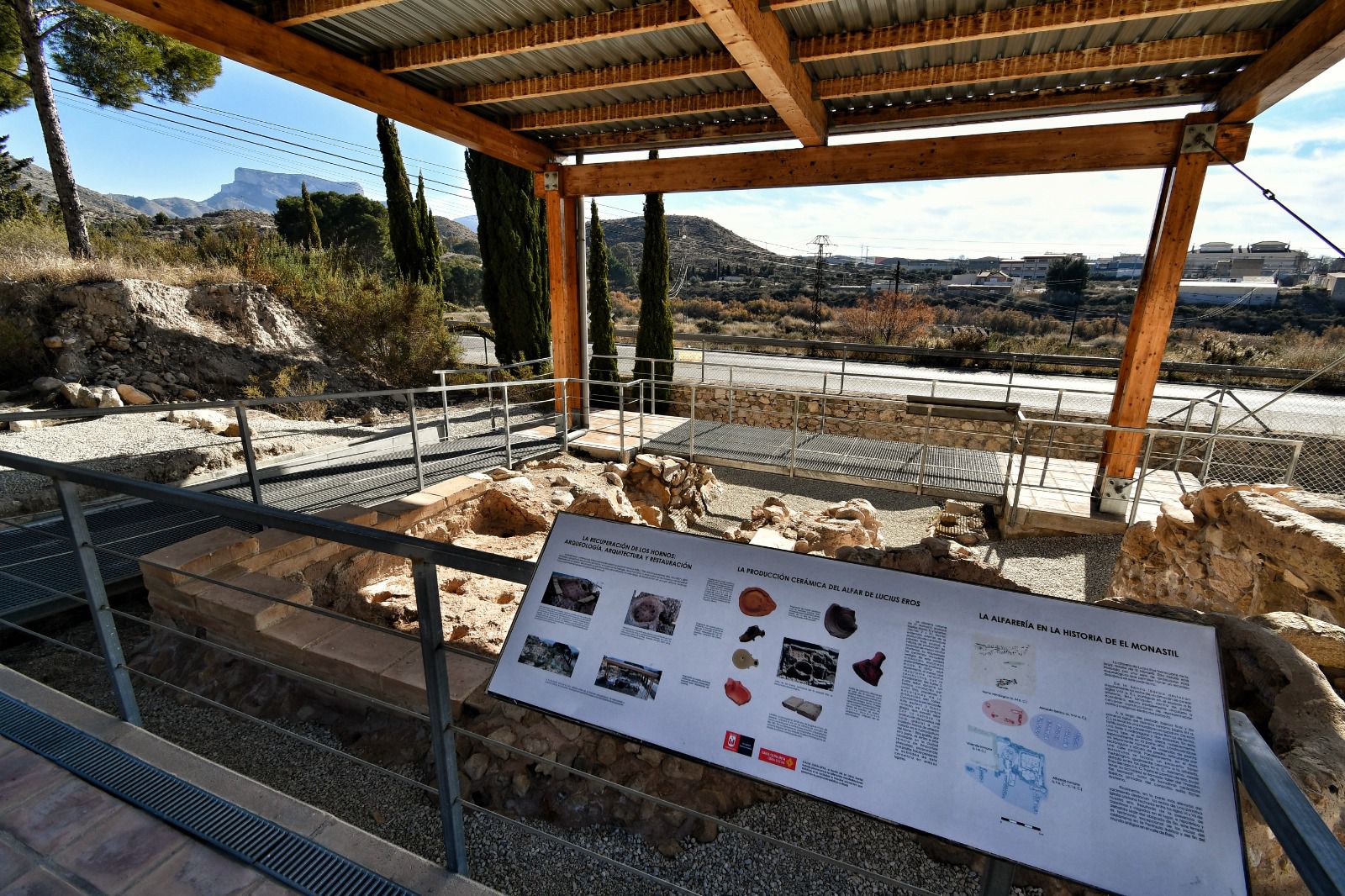
The remains of El Monastil, largely restored after years of abandonment, bear testimony of this rich past, completed by thousands of pieces preserved in the Archaeological Museum of Elda. A legacy that has been known since the 19th century and which, especially since the second half of the 20th century, has been excavated by the Archaeology Section of the Elda Excursionist Centre and Elda Town Council. In 2002, consolidation and restoration work began, which has enabled considerable progress in the recovery of the site.
During the visit, you will be able to appreciate both its domestic and artisan complexes, in which the Iberian warehouse and the Roman pottery stand out; recognise the defensive system of the Ibero-Roman wall, reconditioned in Late Ancient history; distinguish the entrance, the streets, the houses and outbuildings of the settlement, and discover the church that presided over its upper part. The Monastil allows us to understand and evoke the passage of different cultures through the valley of Elda, as well as its prehistoric and ancient settlement during more than three millennia of history.
A mosaic of history and nature
The Monastil presides over a space rich in places of historical and natural value, typical of a true cultural park articulated by the Vinalopó river and the A31 motorway. A millenary tradition of works linked to the culture of water, especially to the management and control of the limited hydraulic resources of the region (dams, mills, waterwheels, irrigation channels, wells, springs and hydroelectric power stations known as «light factories») can be recognised in the landscape. This border area of various historical political entities, and of linguistic and cultural mixture located between two valleys, was also key for the defence of the territory and for the development of communications, as a strategic place of passage and surveillance between the Mediterranean and the plateau.
Archaeology is confirmed by several archaeological sites dating from the 5th millennium BC to the 20th century. Also outstanding are the watchtower of La Torreta (14th century), which takes us back to the turbulent frontier world between Castile and Aragon in the Middle Ages; the historic dams of the Elda reservoir (17th-19th centuries), among the most important engineering works in the history of the valley; or the El Poblet Estate, known as the “Yuste Position”, a milestone at the end of the Civil War. In terms of natural heritage, the wetlands of the Reservoir and the Almortxó sandbanks stand out, the latter preserving a unique and unusual dune landscape with a great popular tradition among the people of Elda and Petrer.
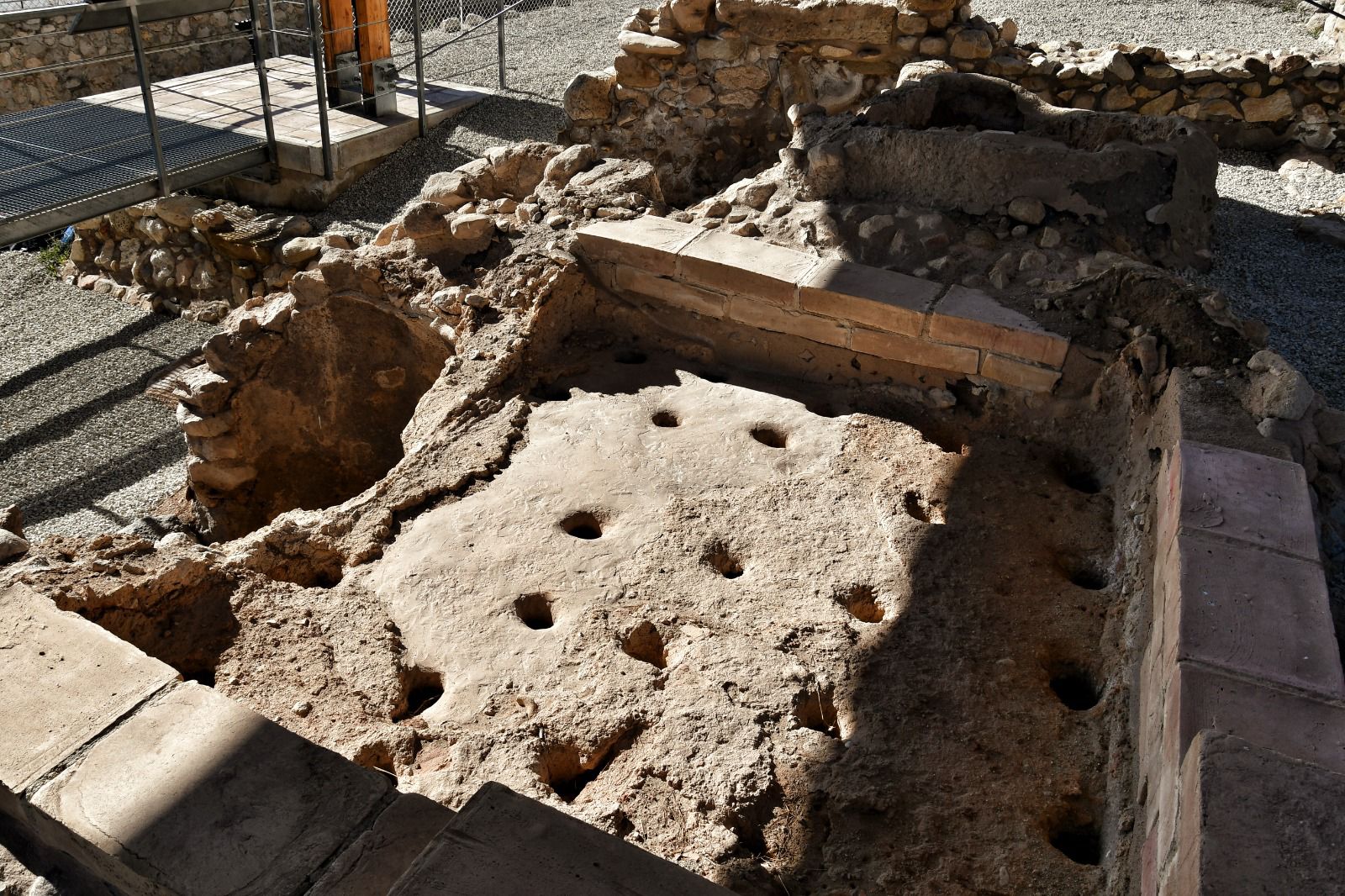
Byzantine and Visigothic church (6th-7th century AD)
The highest part of El Monastil is dominated by the remains of a church. It was built in the Byzantine period, in the second half of the 6th century, and remained in use during later Visigothic rule, especially in the 7th century. The building is divided into two rooms and preserves a horseshoe apse and a striking pit cut into the ground. The pit may have been used as a rustic baptismal font, or to house a singular tomb within the religious facility.
Some of the most remarkable findings of Christian worship during this period come from this site and its surroundings, and are exhibited in the Archaeological Museum of Elda.
Precisely the church and its furnishings (architectural, ornamental and liturgical pieces), among other data, allow us to raise two hypotheses: the existence of an active monastery at this stage – from which the current name of the site, “Monastil”, probably comes from – and the location of the Episcopal See of Elda, a bishopric mentioned in several of the Visigothic councils of Toledo in the 7th century.
The church of El Monastil, restored in 2008, is one of the oldest in the Valencian Community. It is an important testimony of the Christianisation of the Elda valley at the end of Ancient history and the beginning of the Middle Ages, as well as to the Byzantine and Visigothic presence in the southeast of the Iberian Peninsula.
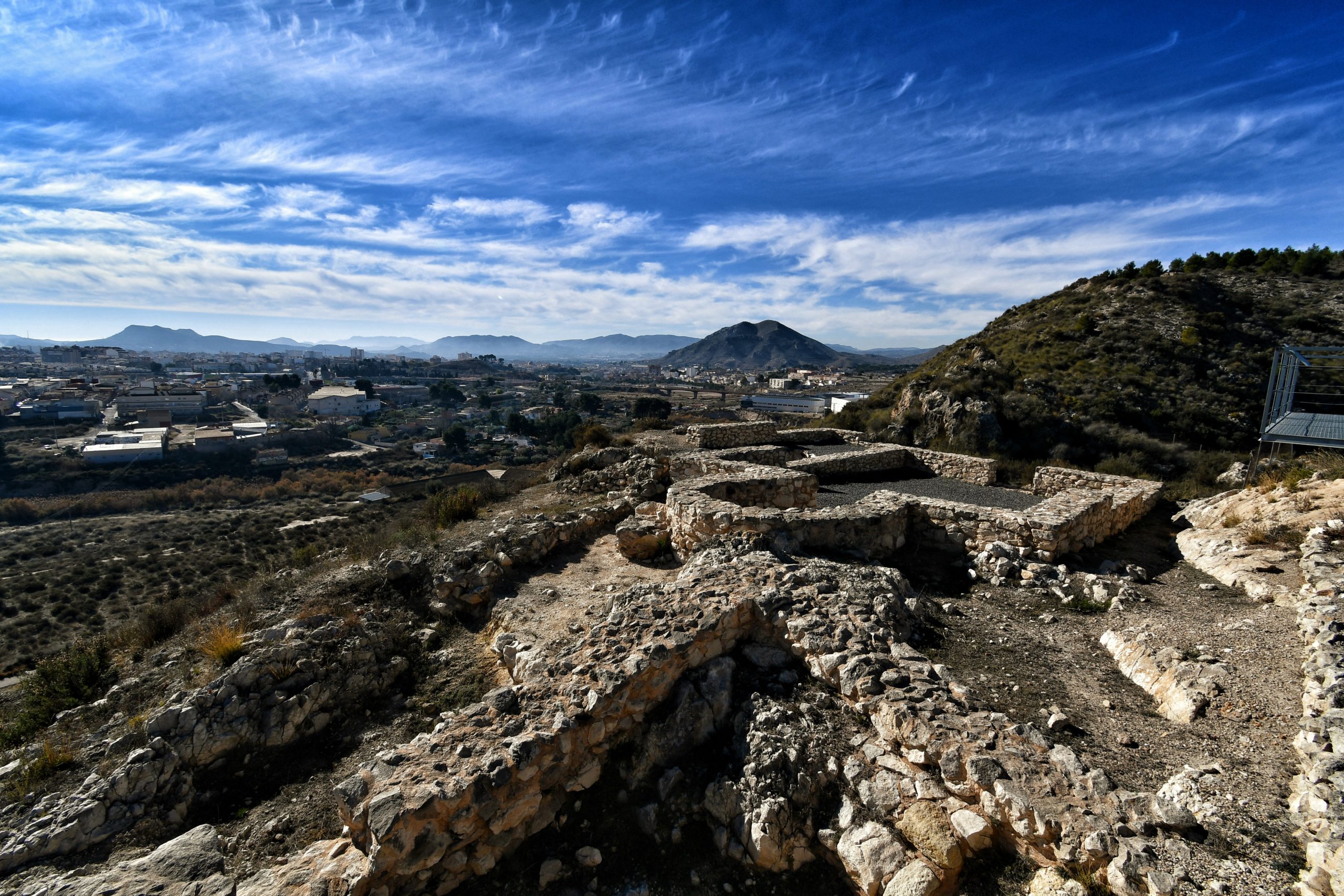
Photo Gallery
Vitual tour
Location and visits
ADDRESS: CV-835. Take motorway exit «Elda-Hospital».
VISITING HOURS: First half of 2024, guided tours in Spanish on the following Sundays
- 3 de March – 11:00h.
- 24 de March – 11:00h.
- 21 de April– 11:00h.
- 19 de May– 10:00h.
- 23 June– 10:00h.
Tour duration: 1 hour and 15 minutes.
PRICE: free of charge
MORE INFORMATION AND BOOKINGS
Telephone.: 966 98 03 00
Email: turismo@elda.es
Whatsapp 647851758
YACIMIENTO ARQUEOLÓGICO “EL MONASTIL”
News
- «El primer monasterio de la Península Ibérica está en Alicante». National Geografic.
- «Elda, el lugar donde se encuentra el primer monasterio bizantino de la península». La Sexta.
- «Identificado en Elda el primer monasterio bizantino de la península Ibérica». El País.
- «Identificado en Elda el primer monasterio bizantino de la península Ibérica». La Ser.

